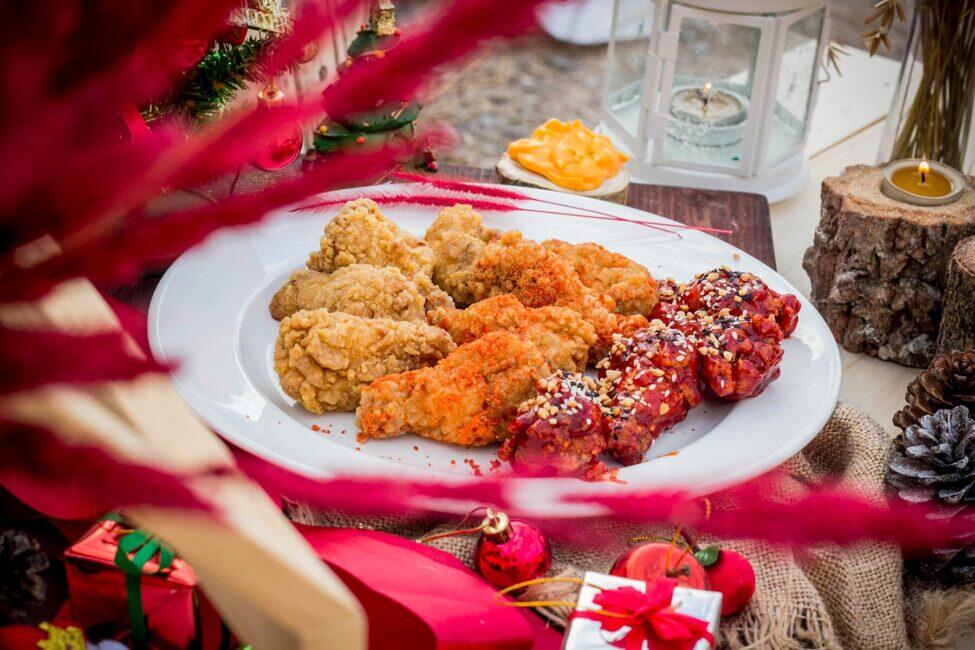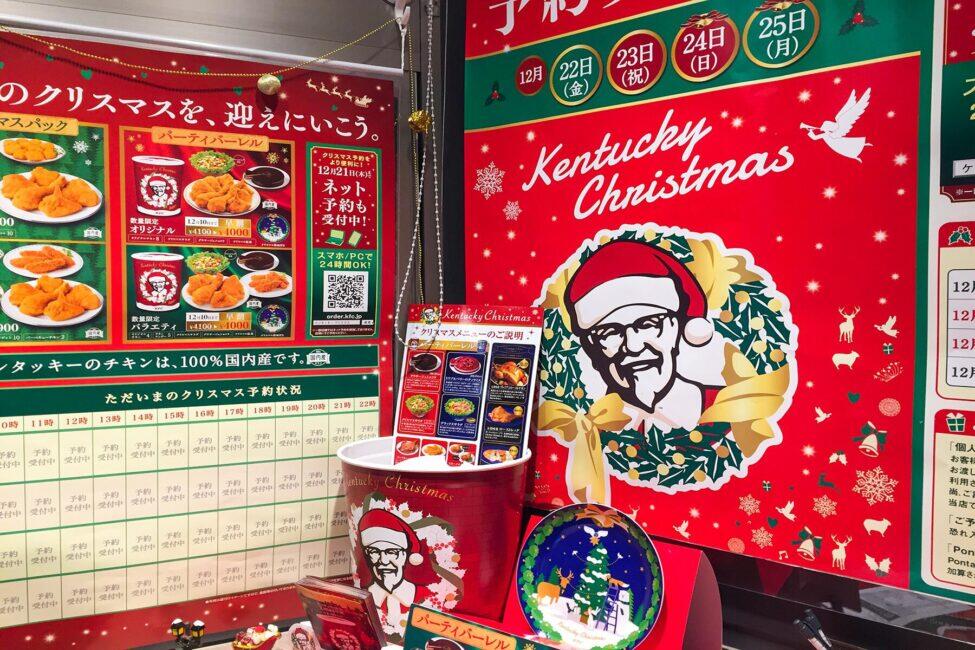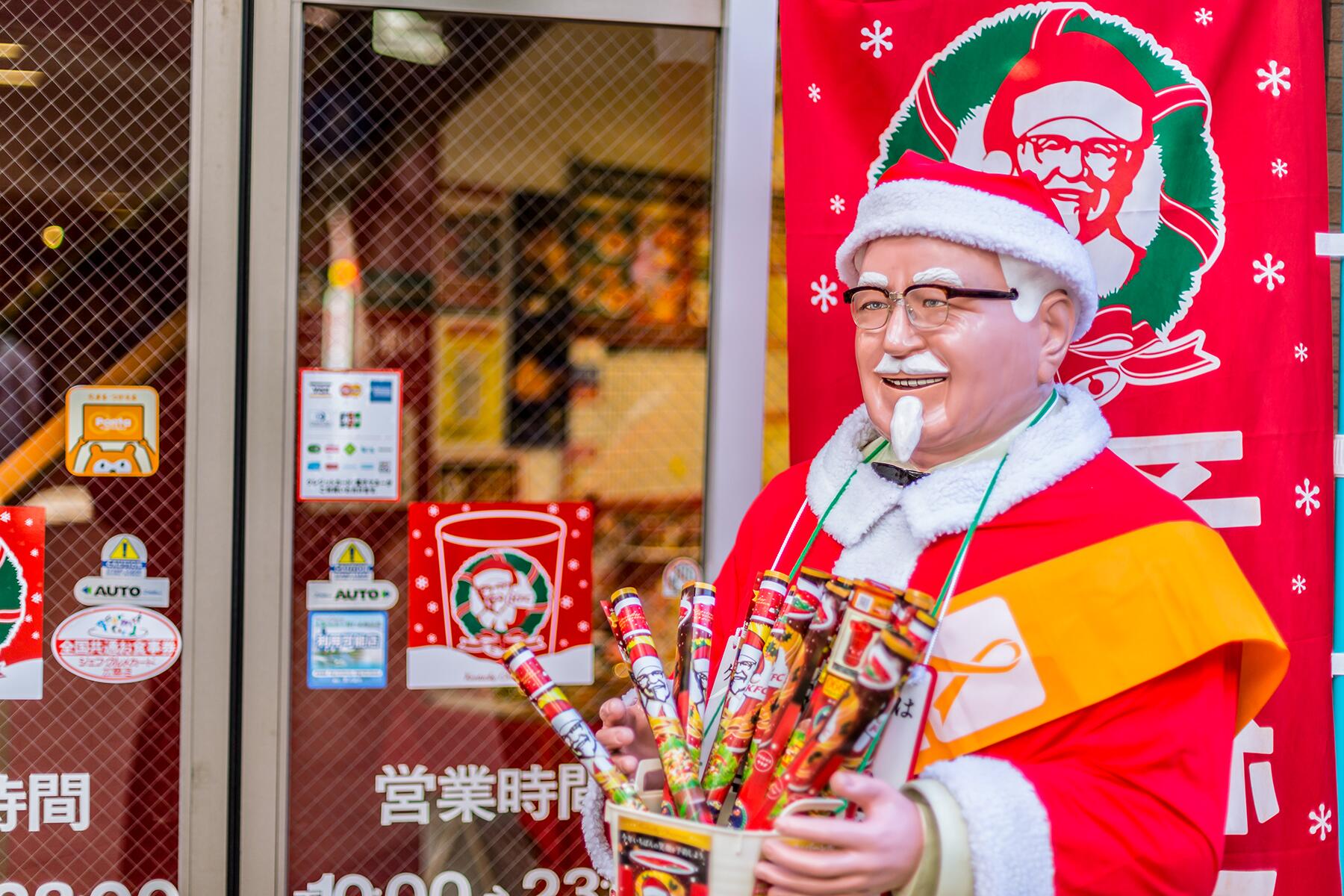How the Colonel’s secret KFC recipe turned into a nationwide tradition in Japan is as enchanting as any traditional Christmas tale.
When Japanese families sit down for lunch on December 25, they probably won’t be carving a turkey or fighting over mashed potatoes, and there almost certainly won’t be a traditional Christmas fruitcake for dessert. Instead, when Christmas rolls around this year—much like every other year—families in Japan will be tucking into their festive “Party Barrel” from Kentucky Fried Chicken. Yes, that very same finger-lickin’ good KFC that started in the United States in the 1930s.
Today, KFC for Christmas is one of the longest-standing Christmas traditions in Japan. Not only is Colonel Sanders now synonymous with Santa Claus—as ubiquitous a sight as Christmas trees and mistletoe in the West—but the festive holidays mark the biggest sales period for the company. At some KFC outlets, daily sales are 10 times their usual take as an estimated 3.6 million Japanese families celebrate the holidays with Kentucky Fried Chicken. Just how the Colonel’s secret recipe turned into a nationwide tradition in Japan, is as enchanting as any traditional Christmas tale. And, like any good Christmas story, there are several versions.
In 1970, the World Expo came to Osaka against a backdrop of economic prosperity following WWII and a period when Japan was beginning to open up to international influences. At the expo, a KFC test store was reportedly successfully selling bucketfuls of fried chicken to a curious and hungry audience who had never been exposed to Western fast food before.
Recommended Fodor’s Video
Also at the expo was a young sales manager called Takeshi Okawara who would later go on to become the manager of the first-ever KFC restaurant in Japan. Success, however, was not immediate. In fact, Okawara went so far as to tell the podcast Brought to you by… that the store was a giant failure and he was forced to sleep on sacks in the kitchen as he couldn’t afford to pay rent. He cites the English signage and the red-and-white branded shop front as reasons why customers were reluctant to come through the door. “People would ask if this is a barbershop or a chocolate shop,” Okawara tells the podcast.
A chance encounter—some might call it a Christmas miracle—saved the day. A local kindergarten placed an order for their students’ Christmas party and asked if someone could dress up as Santa to deliver it. Okawara duly put on a Santa Claus costume and arrived at the party with the fried chicken, dancing along to a self-penned song about “Kentucky chicken.” This, according to Okawara, is what gave him the idea to tie KFC to Christmas.

He dressed the Colonel Sanders statue outside his store in a traditional Santa suit and created the “Party Barrel”—a giant Bento-type box that not only holds fried chicken but also other foods such as coleslaw and cake. Suddenly, customers started to appear.
As word spread, a journalist from NHK, the Japan Broadcasting Corporation, interviewed Okawara and asked if KFC was an American Christmas tradition. Okawara, sensing that this was too good an opportunity to miss, lied and said yes.
KFC denies this fairytale version of events, however, and certainly, no recording of the NHK interview has been found. According to the company, it was homesick foreigners in Japan missing traditional Christmas dinners that inspired KFC to sell chicken as a substitute for traditional turkey.
Whichever version you believe, it still makes for a good story. There’s no denying that KFC for the holidays in Japan has become a Christmas legend. Quite why it became just so popular, however, is another matter.
Joonas Rokka, Professor of Marketing and Director of Lifestyle Research Centre at Emlyon Business School in France, who has studied the KFC phenomenon and regularly uses the promotions campaign as an example when teaching, believes it was a combination of timing and filling a gap.
“When [Okawara] introduced the idea, there was not a Christmas tradition in Japan,” Rokka explains. “Only a minority of the population is Christian and it’s not a national holiday. Up until that point, Christmas was not so much an event for families but something similar to Valentine’s Day where you would spend the night at a restaurant with your partner. There was a void at this time of year and the company filled that space saying this is what you can do at Christmas.”

According to Daiya Kobayashi, a Tokyo native who enjoyed KFC for Christmas as a child, food is another reason why the KFC tradition really took off. “For Japanese people, when they talk about parties, it’s pretty much always about one thing only and that’s food. Food is such a big part of a celebration in Japan, so if people are holding a Christmas party then it’s pretty much guaranteed that there’s going to be a bucket of KFC on the table.”
Today the “Kurisumasu ni wa Kentakkii” campaign, which translates to “Kentucky for Christmas,” is still going strong, and the Party Barrel continues to evolve. Now the Christmas packages include cake and champagne and needs to be ordered several weeks in advance.
“Being able to own a Christmas tradition is something quite exceptional,” says Rokka. “There are very few examples of how you, as a corporate brand, can become so central to a celebration.” Kobayashi agrees. “If you ask a Japanese person to choose five words to describe Christmas to you, I’m sure that one of those words would be KFC.”




